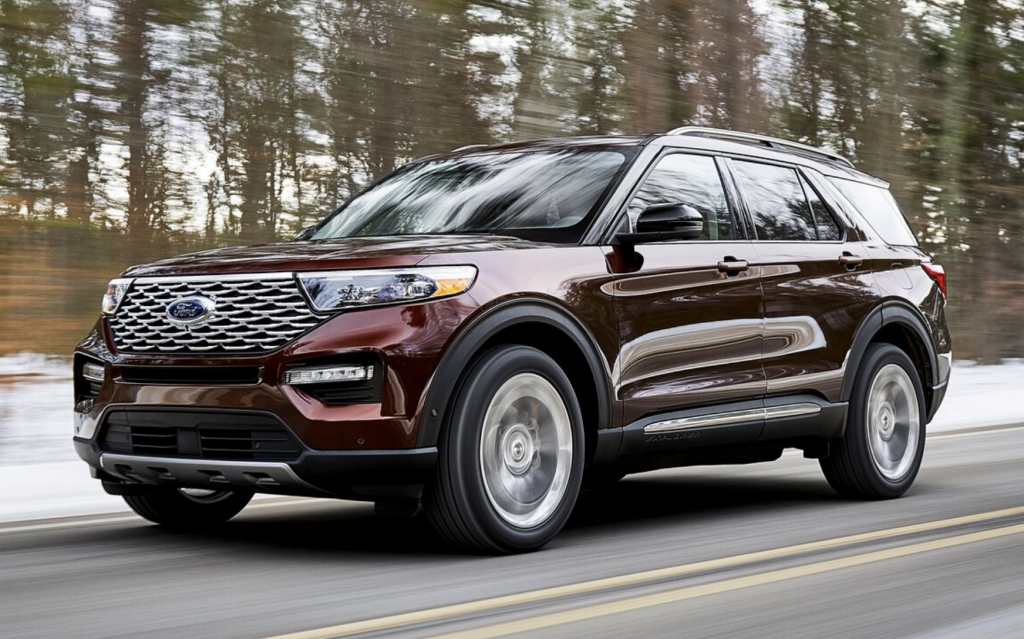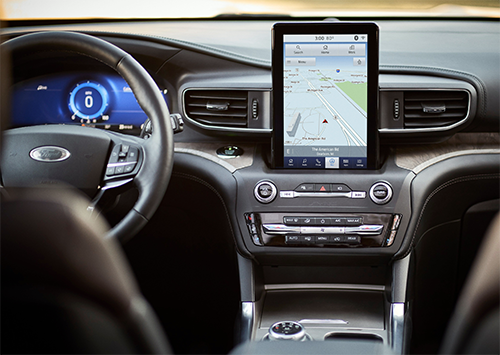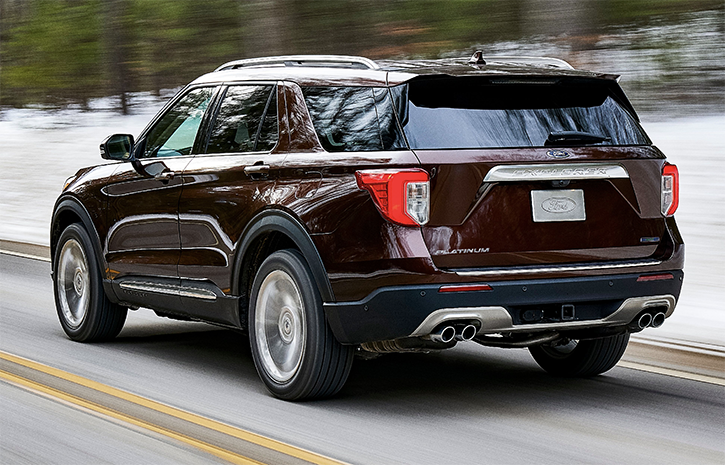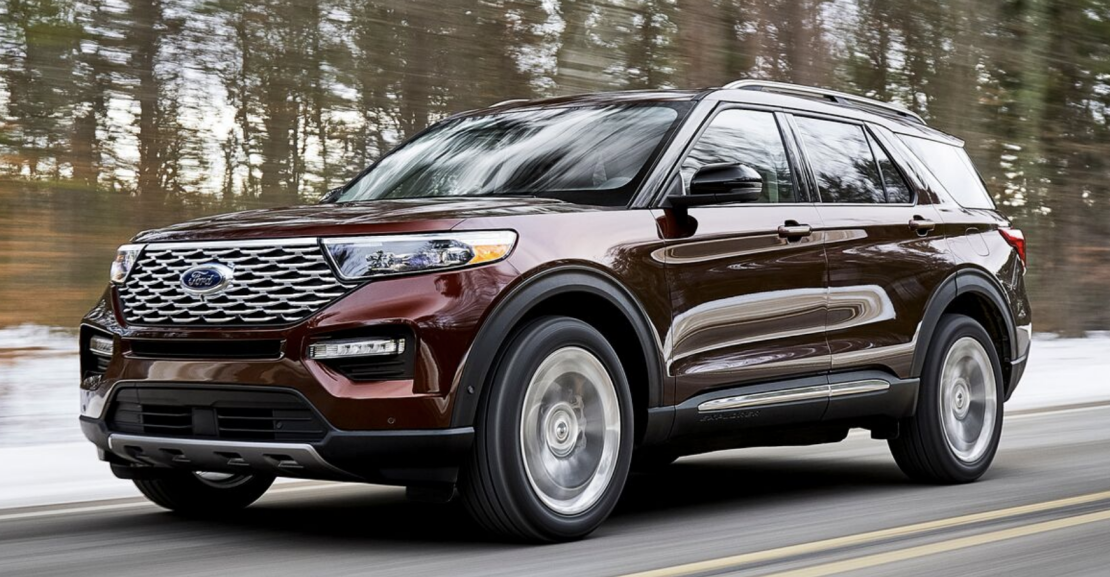
 DETROIT—The 2019 North American International Auto Show in Detroit is just around the corner, but Ford is getting a head start on the festivities with today’s reveal of the all-new 2020 Ford Explorer at Ford Field in Detroit.
DETROIT—The 2019 North American International Auto Show in Detroit is just around the corner, but Ford is getting a head start on the festivities with today’s reveal of the all-new 2020 Ford Explorer at Ford Field in Detroit.
More from the Detroit Auto Show
2020 Ford Explorer

The 2020 Explorer has been redesigned from the ground up on new rear-wheel-drive architecture, and it receives upgraded powertrains and a long list of new technology features. The lineup will expand to encompass base, XLT, Limited, Limited Hybrid, ST, and Platinum models.
Interior space for both passengers and cargo was a design priority. The new Explorer offers 18.2 cubic feet of cargo volume behind the third-row seats, 47.9 cu. ft. behind the second row, and 87.8 cu. ft. with both the second- and third-row seats folded. Ford says the second-row seats have an “E-Z entry” sliding mechanism that allows for easy access to the third row using just one hand.
Base, XLT, and Limited models are powered by a 2.3-liter EcoBoost 4-cylinder that puts out an estimated 300 horsepower and is paired with a 10-speed automatic transmission. The Platinum model gets a twin-turbocharged 3.0-liter EcoBoost V6 that is projected to produce 365 horsepower and 380 pound-feet of torque on premium gasoline.
Ford hasn’t yet released powertrain specs and details for its two especially noteworthy new Explorer variants: the performance-focused ST and the Limited Hybrid (the first-ever hybrid Explorer). Stay tuned for that info, which will be announced next Monday during the auto-show introduction of those models.
An available Terrain Management System enables drivers to choose from up to seven drive-mode settings—normal, sport, trail, slippery, tow/haul, and eco are included on rear-drive models. Four-wheel-drive Explorers add a deep snow and sand mode. Properly equipped RWD Explorers are rated to tow up to 5300 pounds with the 2.3-liter four and 5600 pounds with the 3.0-liter V6.
Standard features on all Explorers include a power liftgate, 8-inch touchscreen with Ford’s SYNC 3 infotainment interface, and FordPass Connect—a remote-access feature that also enables 4G LTE Wi-Fi connectivity for up to 10 devices. A 10.1-inch portrait-mounted touchscreen with split-screen capability is available, as is a 12.3-inch digital instrument cluster with 3D animated graphics.
Ford’s Co-Pilot360 suite of driver-assist features is standard across the board—it includes automatic high-beam headlamps, Blind Spot Information System with cross-traffic alert, lane-keep assist, and a forward collision warning system with automatic emergency braking and pedestrian detection. The Co-Pilot360 Assist+ system, which is available on XLT and standard on Limited and above, includes all of the above content plus evasive steering assist, a voice-activated touchscreen navigation system with SiriusXM traffic info, and adaptive cruise control with speed sign recognition.
One of the new Explorer’s most noteworthy new features—Active Park Assist 2.0—is standard on the Platinum model. It allows the driver to park in a parallel or perpendicular spot just by pressing a button—the vehicle operates the steering wheel, shifter, and throttle and brake pedals. Also standard on the Platinum is Reverse Brake Assist, which can automatically apply the brakes to avoid a collision when backing up at low speed. Other Platinum features include a twin-panel panoramic sunroof, upgraded leather upholstery, available 21-inch aluminum wheels, and satin-aluminum body-trim elements.
The 2020 Ford Explorer will be built at Ford’s Chicago Assembly Plant and is slated to go on sale this summer.
2018 Los Angeles Auto Show: 2020 Lincoln Aviator
CG Says:
Ford announced last April that it would be phasing out almost all of its traditional passenger cars, and the jam-packed 2020 Explorer lineup is certainly evidence of where the company is now focusing its resources. The Explorer is one of Ford’s top-selling vehicles (only the F-150 and Escape top its sales numbers). With an astutely broadened model lineup aimed at a very wide range of family-focused buyers, an impressive roster of new features, and rear-wheel-drive-based architecture that promises at least a slightly more engaging driving experience, we’d say the new Explorer will continue as one of the most popular vehicles in its segment.




